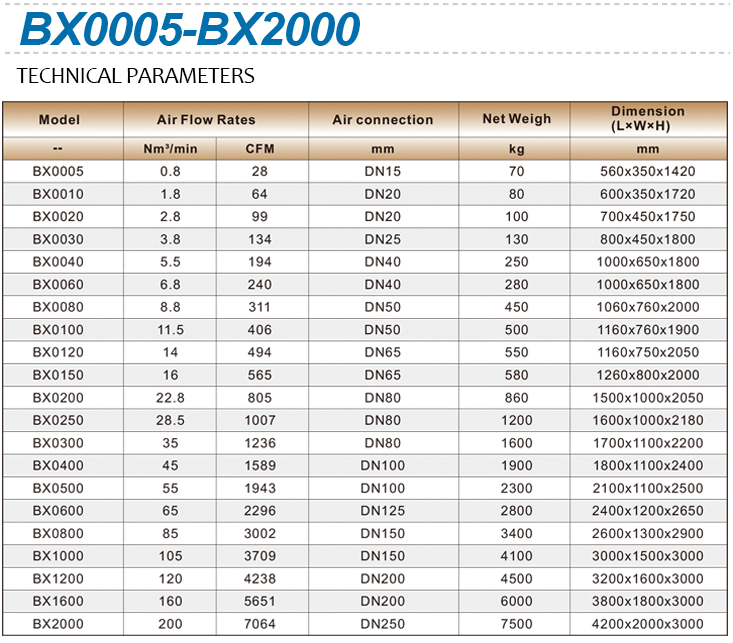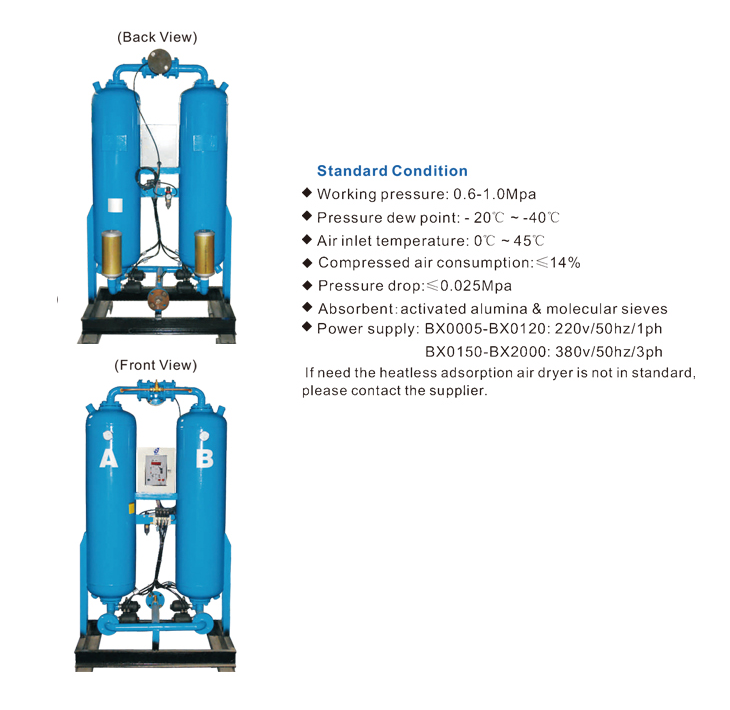
Adsorption dryers are devices used to remove moisture from compressed air or gas by employing the principle of adsorption. They are commonly used in industrial and commercial applications where the presence of moisture in compressed air can cause damage to equipment, affect product quality, or hinder process efficiency.
Moisture removal: Adsorption dryers are designed to extract moisture from compressed air by passing it through a desiccant material. The desiccant, typically made of materials like activated alumina or molecular sieves, has a high affinity for water molecules. As the compressed air flows through the dryer, the desiccant adsorbs the moisture, effectively drying the air.
Two-stage process: Adsorption dryers usually employ a two-stage process to ensure efficient drying. The first stage is the adsorption phase, where the wet compressed air passes through one chamber containing the desiccant material. The moisture is adsorbed by the desiccant, leaving the air dry. In the second stage, known as the regeneration phase, a portion of the dry compressed air is diverted to the other chamber, which contains a heated desiccant bed. The heated air strips away the moisture from the desiccant, regenerating it for the next cycle.
Dew point control: Adsorption dryers are capable of achieving very low dew points, typically in the range of -40°C to -70°C (-40°F to -100°F). Dew point is the temperature at which the moisture in the air begins to condense. By reducing the dew point, adsorption dryers ensure that the compressed air remains dry and free from moisture, even in critical applications.
Reliable operation: Adsorption dryers offer reliable performance and continuous drying capabilities. They are designed to provide a constant supply of dry compressed air by alternating between the adsorption and regeneration stages. This allows for uninterrupted operation in applications where a consistent supply of dry air is crucial.
Energy efficiency: Adsorption dryers can be equipped with energy-saving features to optimize their operation. For example, some models utilize heat exchangers to recover and reuse the heat generated during the regeneration phase, reducing energy consumption. Additionally, advanced control systems can monitor and optimize the drying process, ensuring energy efficiency and cost savings.
Application-specific designs: Adsorption dryers are available in various designs and sizes to meet different application requirements. They can be integrated into compressed air systems for industries such as manufacturing, food and beverage, pharmaceuticals, electronics, and more. Adsorption dryers can be tailored to specific flow rates, pressure levels, and dew point requirements, ensuring effective moisture removal in diverse applications.

